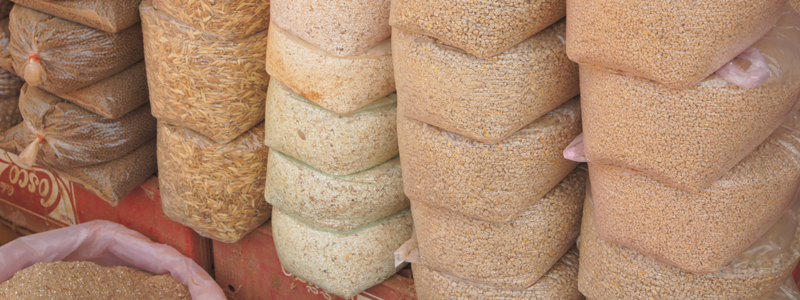
India FY2013-14 agri exports exceed target but remain below potential
The Dollar Business Bureau | @TheDollarBiz
 India’s agriculture exports are dominated by cereals, while value-added agri exports remain low
India’s agriculture exports are dominated by cereals, while value-added agri exports remain lowIndia’s agricultural products exports have increased to $31.26 billion in FY2013-14 against the target of $22 billion. This comes in the backdrop of the shortfall of India’s overall exports of around $313.5 billion in FY2013-14 against the target of $325 billion. However, India’s agri exports remain much below potential, say experts. India is a top producer of several agricultural products including rice, milk, and fruits and vegetables. While most of it consumed in the domestic market, India wastes significant quantities of agri products due to poor handling and lack of adequate storage facilities. It is estimated that India wastes nearly 18% of its total fruits and vegetables production due to lack of adequate cold storage facilities and refrigerated transport. Post-harvest losses stand at a high of around 15%, according to the Central Institute of Post-Harvest Engineering and Technology (CIPHET). According to a private study, India’s current cold storage capacity stands at around 32 million tonnes which is almost half the requirement of around 61 million tonnes. More importantly, India’s agri exports are mostly dependent on surplus production, low prices and policy changes (such as sanctions on Iran), while value addition remains low at around 10%. Indian companies should focus on value addition to propel India’s export earnings from agricultural products, say experts. Ajay Sahai, Director General & CEO of the Federation of Indian Exporters Organisation (FIEO), told The Dollar Business, “Agriculture exports have done well but they are nowhere near their potential. India’s agriculture exports are dominated by cereals such as rice, wheat, sugar, etc. We need to move into value-added exports in consumer packs to exploit the potential in this segment.” He added that exports of processed food have done well and looking at the fact that India is the second largest producer of fruits & vegetables we can aim for higher agriculture exports in future.






 to success.
to success.